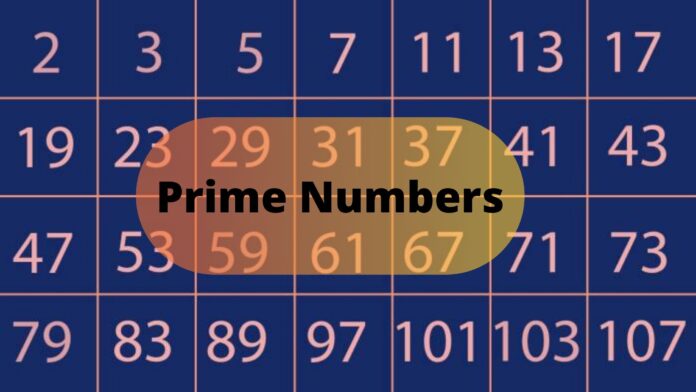Prime numbers are identified by their characteristics of having two factors, that is, 1 and the number itself. The prime number is the most basic of all numbers. Let’s look at some prime number instances and a list of prime numbers up to 1000.
Let’s use the number eleven as an example. 11 1 and 1 11 are two ways to write it. The number 11 can’t be written any other way. As a result, 1 and 11 are the factors of number 11. As a result, we may call 11 a prime number.
Similarly, the numbers 2, 3, 5, 7, 13, 17, and so on can only be expressed in two ways with a single component of 1, and therefore are prime numbers.
Each prime number can only be divided by one and itself. It implies that 1 will never be a prime number. As a result, each prime number should have just two elements and be bigger than one.
The Origins of Prime Numbers
Eratosthenes was the first to discover the prime number (275-194 B.C.). Eratosthenes used a sieve to filter out prime numbers from a list of natural numbers and drain away composite numbers.
Students can practice this strategy by writing the positive integers from 1 to 1000, circling the prime numbers, and crossing out all the composite numbers.
Prime Numbers and Their Properties
Prime number properties can be used to determine if a number is prime or not. The following are the details:
- Any number greater than one is divisible by one and itself.
- Even integers larger than 2 may be represented as the sum of two prime numbers, such as 8, which can be represented as 3+5 = 8.
- The only even prime number is 2, while all other prime numbers are odd.
- At least one prime number may be divided by any integer bigger than one.
- The sum of two primes can be represented as any even positive integer bigger than 2.
- All prime numbers, with the exception of 2, are odd. To put it another way, two is the only even prime number.
- Coprime numbers are prime numbers that are coprime to each other.
Prime Numbers vs. Composite Numbers
| Numbers that are prime | Numbers in Composition |
| There are only two elements in a prime number. | There are usually more than two elements in a composite number. |
| It’s divisible by one and by the number itself. Number 2 is, for example, divisible by 1 and 2. | All of its components may be split. Number 6 is, for example, divisible by 2, 3, and 6. |
| 2, 3, 7, 11, 109, 113, 181, 191, and so on. | 4, 8, 10, 15, 85, 114, 184, and so on. |
Prime Numbers List From one to a thousand
Take a look at the list of prime numbers from one to a thousand. Because the natural number one isn’t a prime number because it has just one element, we’ll start with number two.
- 2, 3, 5, 7, 11, 13, 17, 19, 23, 29, 31, 37, 41, 43, 47, 53, 59, 61, 67, 71, 73, 79, 83, 89, 97 are prime numbers (total 25 prime numbers)
- 101, 103, 107, 109, 113, 127, 131, 137, 139, 149, 151, 157, 163, 167, 173, 179, 181, 191, 193, 197, 199 are prime numbers (total 21 prime numbers)
- Numbers 211, 223, 227, 229, 233, 239, 241, 251, 257, 263, 269, 271, 277, 281, 283, 293 are prime numbers (total 16 prime numbers)
- 307, 311, 313, 317, 331, 337, 347, 349, 353, 359, 367, 373, 379, 383, 389, 397 are prime numbers (total 16 prime numbers)
- 401, 409, 419, 421, 431, 439, 443, 449, 457, 461, 463, 467, 479, 487, 491, 499 are prime numbers (total 17 prime numbers)
- 503, 509, 521, 523, 541, 547, 557, 563, 569, 571, 577, 587, 593, 599 are prime numbers. (There are a total of 14 prime numbers)
- 601, 607, 613, 617, 619, 631, 641, 643, 647, 653, 659, 661, 673, 677, 683, 691 are prime numbers (total 16 prime numbers)
- 701, 709, 719, 727, 733, 739, 743, 751, 757, 761, 769, 773, 787, 797, (total 14 prime numbers)
- Numbers 801-900: 809, 811, 821, 823, 827, 829, 839, 853, 857, 859, 863, 877, 881, 883, 887 (total 15 prime numbers)
- 901-1000: 907, 911, 919, 929, 937, 941, 947, 953, 967, 971, 977, 983, 991, 997; Prime Numbers 901-1000: 907, 911, (total 14 prime numbers)
From 1 to 1000, there are 168 prime numbers.
Conclusion
Let’s cross-check the (any two) prime numbers given above by removing the number’s potential factors.
Consider the following scenario:
- 599 = 1 × 599
- 929 = 1 × 929
We can see that the aforementioned numbers have only two factors, which are 1 and self, and no other conceivable factors, indicating that they are prime numbers.
Write and Win: Participate in Creative writing Contest & International Essay Contest and win fabulous prizes.











